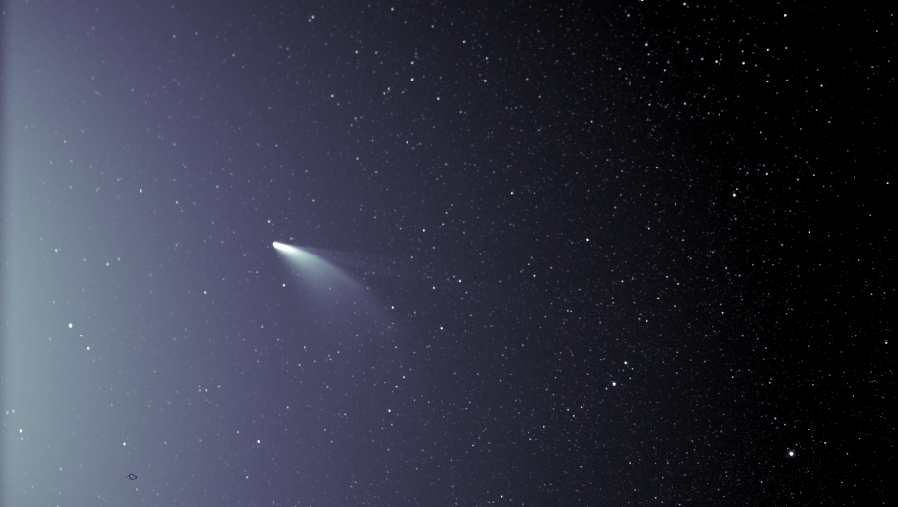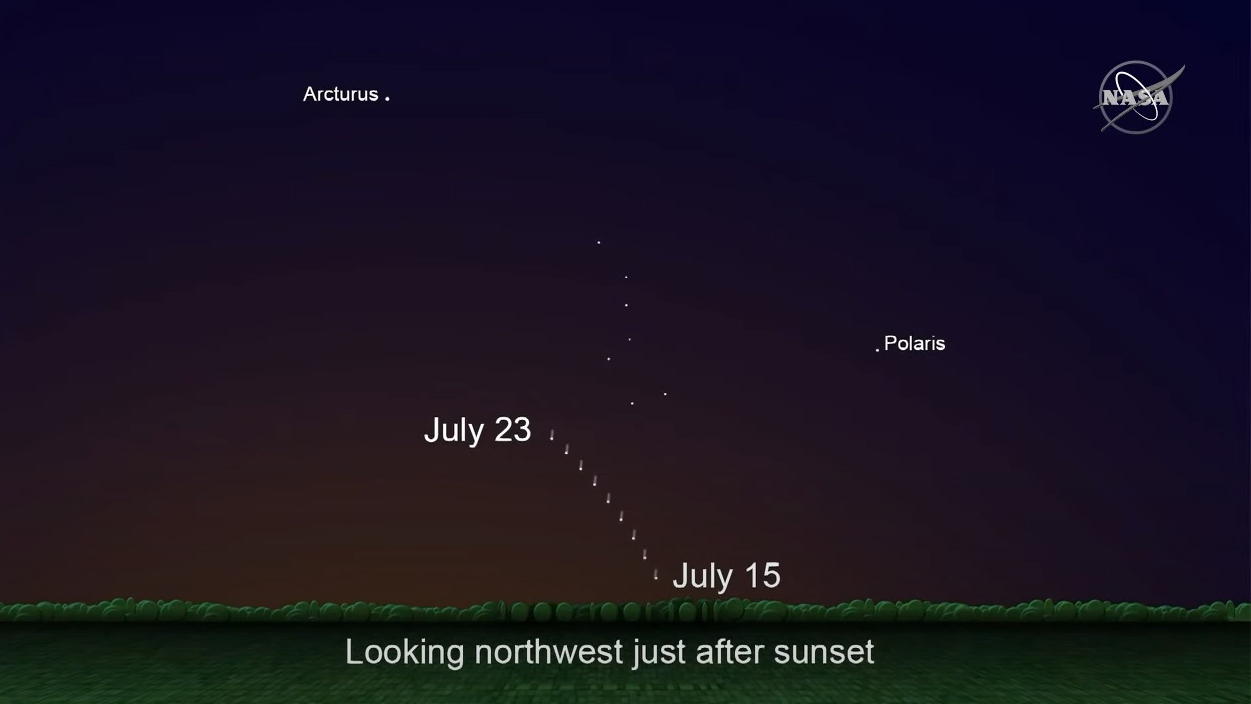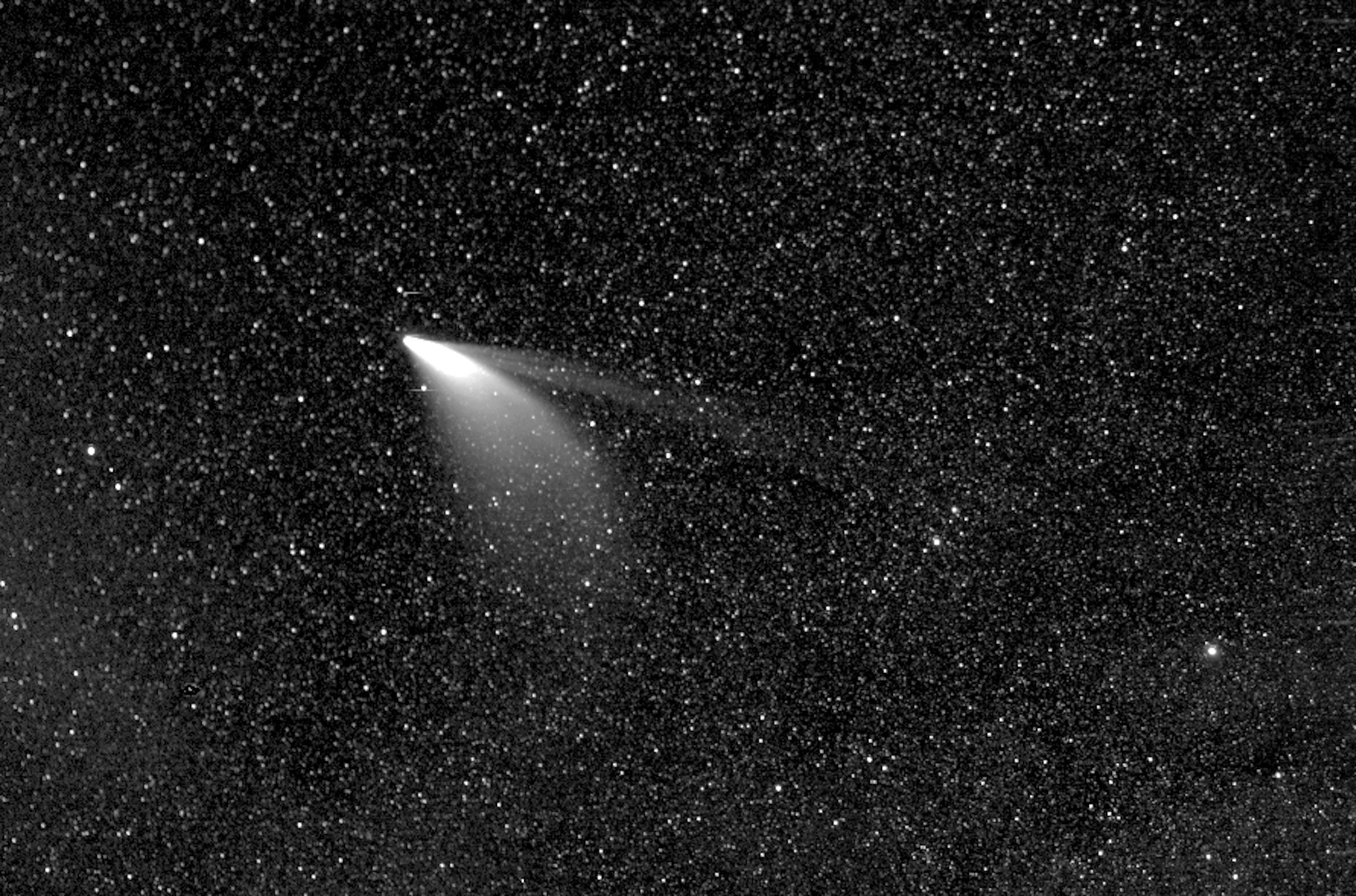Replay: See Comet NEOWISE online tonight in a Slooh webcast
Video courtesy of Slooh. Visit Slooh.com to snap and share your own photos from this live event, and interact with our hosts and guests, and personally control Slooh's telescopes.
Editor's note: Slooh's Comet NEOWISE webcast has ended.
Comet NEOWISE has captivated stargazers in recent weeks and if you haven't seen it yet, you're in luck. The astronomy learning website Slooh will host a free live webcast tonight (July 18).
The comet, officially known as C/2020 F3 NEOWISE, is currently visible in the northwestern sky just after sunset for skywatchers in the Northern Hemisphere. Clear, dark skies away from city lights and an unobstructed view of the northwestern horizon are needed.
Tonight, Slooh will host a live webcast at 5 p.m. EDT (2100 GMT) and you can watch it live here, courtesy of Slooh. You can also watch it directly from Slooh here, as well as via the company's YouTube page here. The webcast is a chance for skywatchers in the Southern Hemisphere (where Comet NEOWISE is not visible) to see the comet, and an opportunity for other stargazers affected by city lights or cloudy skies.
Related: How to see Comet NEOWISE in the evening sky now
More: Best telescopes for the money — 2020 reviews and guide

If you spot Comet NEOWISE, let us know! Send images and comments to spacephotos@space.com to share your views.
"It's a truly magical experience to witness such a large comet gracing our skies!" Slooh's chief astronomical officer Paul Cox said in a statement. "We'll be telling viewers how they can see it from their backyards, and Slooh members will continue to watch it in Slooh's live telescope views every night this week."
Breaking space news, the latest updates on rocket launches, skywatching events and more!
Comet NEOWISE was discovered in March by NASA's NEOWISE space telescope and made its closest approach to the sun in July 3.In early July, the comet was only visible in the predawn sky, but on July 15 it transitioned to an evening sky object visible to the naked eye.
The comet can be seen below the Big Dipper star pattern in the northwestern sky.
"If you’re looking at the sky without the help of observation tools, Comet NEOWISE will likely look like a fuzzy star with a bit of a tail, so using binoculars or a small telescope is recommended to get the best views of this object," NASA said in an advisory.
Related: Amazing photos of Comet NEOWISE from the Earth and space
Comet NEOWISE offers a rare treat for skywatchers as it's been 23 years since a comet has appeared so bright in the night sky, NASA scientists have said.
That comet was Comet Hale-Bopp, which became a brilliant night sky object in 1997 and could be seen by the naked eye for 18 months.
Related: The 9 most brilliant comets ever seen
If you snap an amazing photo or video of Comet NEOWISE in the night sky? Let us know! To share images and videos for a possible story or gallery, send images and comments in to spacephotos@space.com.
Email Tariq Malik at tmalik@space.com or follow him @tariqjmalik. Follow us @Spacedotcom, Facebook and Instagram.

Tariq is the award-winning Editor-in-Chief of Space.com and joined the team in 2001. He covers human spaceflight, as well as skywatching and entertainment. He became Space.com's Editor-in-Chief in 2019. Before joining Space.com, Tariq was a staff reporter for The Los Angeles Times covering education and city beats in La Habra, Fullerton and Huntington Beach. He's a recipient of the 2022 Harry Kolcum Award for excellence in space reporting and the 2025 Space Pioneer Award from the National Space Society. He is an Eagle Scout and Space Camp alum with journalism degrees from the USC and NYU. You can find Tariq at Space.com and as the co-host to the This Week In Space podcast on the TWiT network. To see his latest project, you can follow Tariq on Twitter @tariqjmalik.


